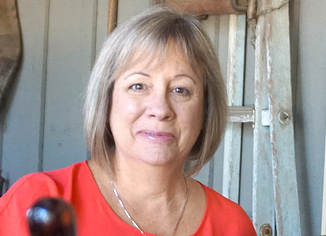
GUEST OPINION
BY LYNETTE LEE ENG
For many residents, traffic starts before 3 p.m. while our teachers and service workers struggle with prolonged and extensive commutes. People can’t get around anymore — forget about public transit. The cost of living is through the roof, state and regional policy makers favor the interests of developers as well as tech companies, and income inequality has never been worse. Insanity is doing the same thing over and over again while expecting different results.
“Plan Bay Area” is continuing to make the same mistakes by relying on flawed projections instead of planning based on what’s better for the future. Trapped in a negative feedback loop of enacting bad policy, Plan Bay Area is in need of bold, structural change; it’s time for residents to be truly involved in the process.
What is Plan Bay Area?
The Metropolitan Transportation Commission (MTC) and the Association of Bay Area Governments (ABAG) prepare and adopt a long-range regional plan for the Bay Area called Plan Bay Area. The Plan is required under state and federal law. Within it, the two agencies develop a long-range, regional housing and transportation plan that is an essential element in every Bay Area city’s general or comprehensive planning process. The current Plan covering the period from 2010 to 2040 has been a disaster.
MTC and ABAG utilize a process that starts with an aggressive jobs-based forecast for the area and then project population and housing numbers for each community out to the year 2050.
Plan Bay Area’s goal is to spread priority development areas through the urban regions of the nine counties, but the Plan called for job growth in Oakland and other urban areas to be about 25% less than that in the West Bay cities (the cities from San Francisco to Santa Clara and Cupertino west of Interstate 280).
In the first seven years of the Plan, the West Bay cities accounted for six times the number of jobs that Oakland and San Jose added. In fact, the number of jobs in the West Bay was 2.5 times greater than those in the rest of the Bay Area. Businesses that find value in co-location have concentrated growth in a single spot — the West Bay.
The imbalance of excessive job growth in the narrow confines of the West Bay has created a set of critical issues that are overwhelming the Bay Area. Land and housing costs are now the highest in the country, regional transit systems are overloaded, congestion is reaching a breaking point, workers commute longer distances than ever before, household income inequality is spiraling out of control, and local democracy is under threat.
The MTC/ABAG Board wants to continue with Plan Bay Area’s ineffective model. The data coming from Plan Bay Area is not based on a proactive plan for the future, but past projections around an aggressive job-growth priority development model. The results? An affordability crisis.
Spread out the jobs
MTC and ABAG should use more moderate and balanced projections of jobs and housing that explore a greater geographical dispersion of jobs and eliminate their model assumption that these projections should be driven by an aggressive job-growth in priority development areas.
It is essential that they examine the impacts of these wider variations in job growth on key variables such as housing and land costs, congestion, commute times, transit effectiveness, household income inequality, and local democracy. We are where we are because Plan Bay Area’s model does not take these metrics into account and it’s got to change.
By law, MTC/ABAG must approve their methodology for the Plan Bay Area 2050 update by September 2019. They have a current public comment period on their methodology from now until this coming Monday, Aug. 19. This is a limited opportunity to have an input on how this process will move along before MTC/ABAG staff prepare in-house their new jobs and population projections.
MTC and ABAG must let the public participate fully in the discussion of a plan that would affect the jobs and housing balance in the Bay Area. Plan Bay Area 2050 will impact each city’s character, municipal infrastructures, and each individual’s quality of life. Individuals should contact the ABAG Executive Board at [email protected] and reach out to their local City Council before Monday.
Lynette Lee Eng was elected to the Los Altos City Council in 2016 and is serving as the city’s mayor this year.



